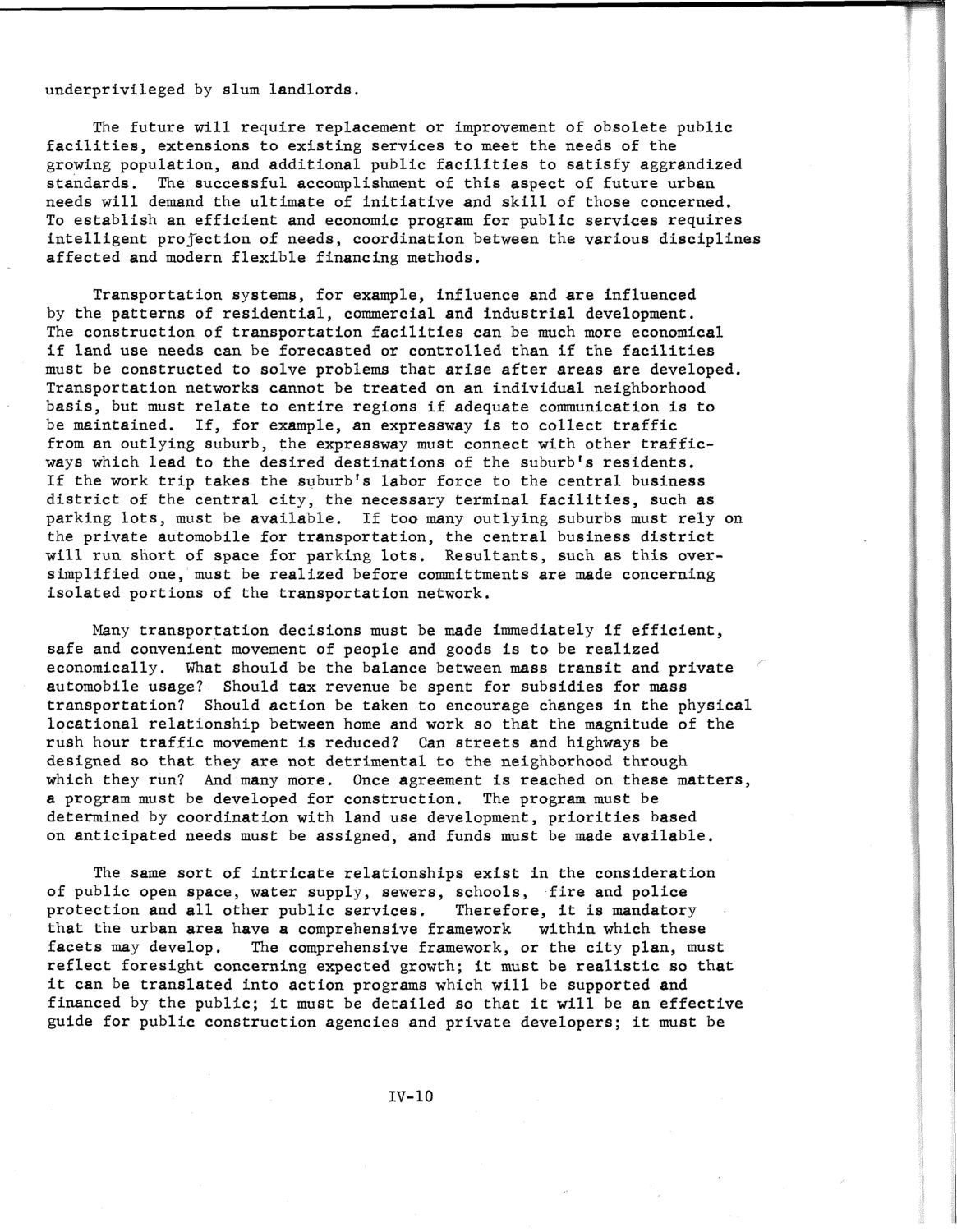| |
| |
Caption: SWE - Proceedings of the First International Conference of Women Engineers and Scientists
This is a reduced-resolution page image for fast online browsing.

EXTRACTED TEXT FROM PAGE:
underprivileged by slum landlords. The future will require replacement or improvement of obsolete public facilities, extensions to existing services to meet the needs of the growing population, and additional public facilities to satisfy aggrandized standards. The successful accomplishment of this aspect of future urban needs will demand the ultimate of initiative and skill of those concerned. To establish an efficient and economic program for public services requires intelligent projection of needs, coordination between the various disciplines affected and modern flexible financing methods. Transportation systems, for example, influence and are influenced by the patterns of residential, commercial and industrial development. The construction of transportation facilities can be much more economical if land use needs can be forecasted or controlled than if the facilities must be constructed to solve problems that arise after areas are developed. Transportation networks cannot be treated on an individual neighborhood basis, but must relate to entire regions if adequate communication is to be maintained. If, for example, an expressway is to collect traffic from an outlying suburb, the expressway must connect with other trafficways which lead to the desired destinations of the suburb's residents. If the work trip takes the suburb's labor force to the central business district of the central city, the necessary terminal facilities, such as parking lots, must be available. If too many outlying suburbs must rely on the private automobile for transportation, the central business district will run short of space for parking lots. Resultants, such as this oversimplified one, must be realized before committments are made concerning isolated portions of the transportation network. Many transportation decisions must be made immediately if efficient, safe and convenient movement of people and goods is to be realized economically. What should be the balance between mass transit and private automobile usage? Should tax revenue be spent for subsidies for mass transportation? Should action be taken to encourage changes in the physical locational relationship between home and work so that the magnitude of the rush hour traffic movement is reduced? Can streets and highways be designed so that they are not detrimental to the neighborhood through which they run? And many more. Once agreement is reached on these matters, a program must be developed for construction. The program must be determined by coordination with land use development, priorities based on anticipated needs must be assigned, and funds must be made available. The same sort of intricate relationships exist in the consideration of public open space, water supply, sewers, schools, fire and police protection and all other public services. Therefore, it is mandatory that the urban area have a comprehensive framework within which these facets may develop. The comprehensive framework, or the city plan, must reflect foresight concerning expected growth; it must be realistic so that it can be translated into action programs which will be supported and financed by the public; it must be detailed so that it will be an effective guide for public construction agencies and private developers; it must be IV-10
| |